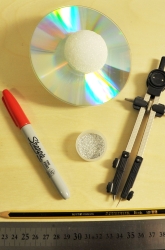
Cargando...
Que puis-je faire ?
224315 materialEducativo
textoFiltroFichaÀ propos de cette ressource...

Saturn is the sixth planet from the Sun and it’s the second-largest planet in the solar system, behind Jupiter. Unlike Earth, Saturn is a gas giant that is mostly like hydrogen and helium instead of solid matter.In 1610, during Galileo’s first observations of the night sky with a telescope, he was puzzled by Saturn’s surroundings. Many hundreds of years later, the space explorers Voyager 1 and 2 took pictures of Saturn’s rings. These closer images revealed that Saturn’s rings are very complex and have many small rings and spaces between them.What are the rings, and why are they there? Inside Saturn’s rings are particles large and small. Some objects inside the rings are as large as buildings, while others could fit in the palm of your hand. Some are even too small to be seen with the naked eye. Most of these particles are made of water ice, dust, and rock. It’s likely that all of this debris came together when the pull of Saturn and its moons moved comets and meteorites into the area.Much of the structure of the rings is likely held in place by the gravitational forces from Saturn’s moons, but scientists aren’t completely sure how the rings hold together. There are many mysteries connected to the rings, including the fact that the rings orbit at different speeds.
It is an educational content by education.com.
By clicking on the title of this resource, you will be redirected to the content. If you want to download the project, you just have to join the website, which now is for FREE.
Contenu exclusif pour les membres de

Mira un ejemplo de lo que te pierdes
Autores:
Catégories:
Fecha publicación: 12.5.2016
La licence originale de la ressource est respectée.
Que se passe t’il ? Inscrivez-vous ou lancer session
Si ya eres usuario, Inicia sesión
Ajouter à Didactalia Arrastra el botón a la barra de marcadores del navegador y comparte tus contenidos preferidos. Más info...
Commenter
0